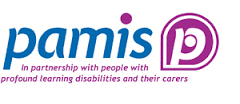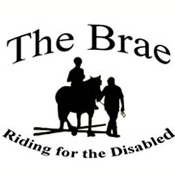The last six weeks have gone by so quickly that I cannot believe is it over! When I started my placement six weeks ago I thought this placement would take a very different path than what it has. The start of my placement was very hectic as I thought that I was going to be completing my placement at The Brae Riding For The Disabled. However, after developing an allergy to something there this had to change. This left my placement very up in the air and left me worried for my future. Starting at PAMIS was very scary as I had not had time to prepare for this placement and I did not know where it would go and what my role within the organisation would be. When I started at PAMIS I had a lot of information given to me as well as the little research I had had time to do. As well as this, I was quickly thrown into life at PAMIS. This was scary and overwhelming but also very educational as it forced me to learn as I went. This was incredibly helpful as I will not have time to prepare for every incident in my future career and at university.
This week has been very hectic as I have had to make sure that everything that I have been working on is completed and handed over to the people that need it. I attended a meeting about K’s transition at the primary school. She had had her first visit up to the high school in the morning. This meeting was with the head teacher of the primary school, two members of staff from the high school, the child’s mother; the visual impairment principal teacher plus two other people that work along with K. This meeting had been requested by K’s mum as she felt that having every professional around the table overwhelming. To overcome this, they had broken the meeting down into smaller groups to create smaller but more meetings. The next meeting was going to with only the health professionals. During our interagency module, we learned that when parents go to these big meetings with several professionals, it can be very daunting. The fact that the primary school had recognised this and made changes to try and overcome the family’s feelings is excellent. This is something that I know that I will take into my future practice if I ever happen to be at or run one of these meetings. Helping families not feel as scared and nervous about this kind of meeting is vital to the success of the meetings so if breaking the professionals down into groups help those feeling lessen then it is a fantastic thing to do.
My main goal I had set myself in the placement was to work with disabled children as I had no experience of working with disabled children. This placement has not only allowed me to meet this goal but it has also allowed me to learn about what families with disabled children go through; the challenges that people with disabilities go through to be able to go about simple everyday tasks like getting on a bus and going to the toilet; and the way that children with disabilities are treated in schools. Learning all about the life of children and adults with profound and multiple disabilities has been fascinating. This placement has taught me a lot about myself as well as several transferable skills that I can take into my future professional practice.
During this placement, I have not had anyone watching over me all the time to make sure that I have completed certain tasks. At the beginning, I was told that I would be helping with K’s transition and what needed to be done for this. After this time, it was my responsibility to have these done when they needed to be done. At PAMIS I had to learn to work autonomously as everyone else had lots to do. I was given different tasks throughout my time and different tasks arose as I attended meetings and spoke to the family and other professionals. Being able to have the time to read about the different campaigns that PAMIS are involved in as well as the research behind the multi-sensory stories and different communication methods has been very interesting and educational. This time has been important as it has meant that I know the research and information behind the projects and campaigns which has given me an insight. At PAMIS I have also had to manage my own time. PAMIS were very flexible about where I could spend my time. If I needed to organise meetings then I was the one to contact the person and arrange when it would be best to do this. It also meant that if I needed to go to the library or go to the shops to buy the sensory items then I could do this. Since, it was always me contacting and arranging the meetings that I was attending it helped to build my confidence when I was at the meetings. Previously, if I have attended meetings I have not felt confident to speak up as I was only there shadowing. However, at this placement that was not the case. Most of the meetings that I attended were only myself, Max and the people/person that we were meeting. This meant that I could not hide behind someone else and I had to speak up and share my own ideas. I was also not viewed as a student during my time at PAMIS. I was always viewed as a professional and asked for my opinion in every meeting that I attended. I know that I will carry this confidence on when I return to university and in my future placements. This relates to several of the Standards of Provisional Registration but mostly to do with professional commitment.
I have learned several new skills during this placement that I will carry on to my future practice as well as my time as a student. I do not think that I could have learned these new skills or developed other skills anywhere else. I plan to continue my relationship with PAMIS and volunteer there when I can.



















 e of these places can be organised. This website may have things like a symbol to show certain facilities at different places, for example, a gold star to show which locations have a changing place
e of these places can be organised. This website may have things like a symbol to show certain facilities at different places, for example, a gold star to show which locations have a changing place
 take a horse 9 months to fully settle in to
take a horse 9 months to fully settle in to e smallest horse he is still a very strong pony. Boris gives rides to several smaller children. Boris has a great temperment and would often have his head over
e smallest horse he is still a very strong pony. Boris gives rides to several smaller children. Boris has a great temperment and would often have his head over











